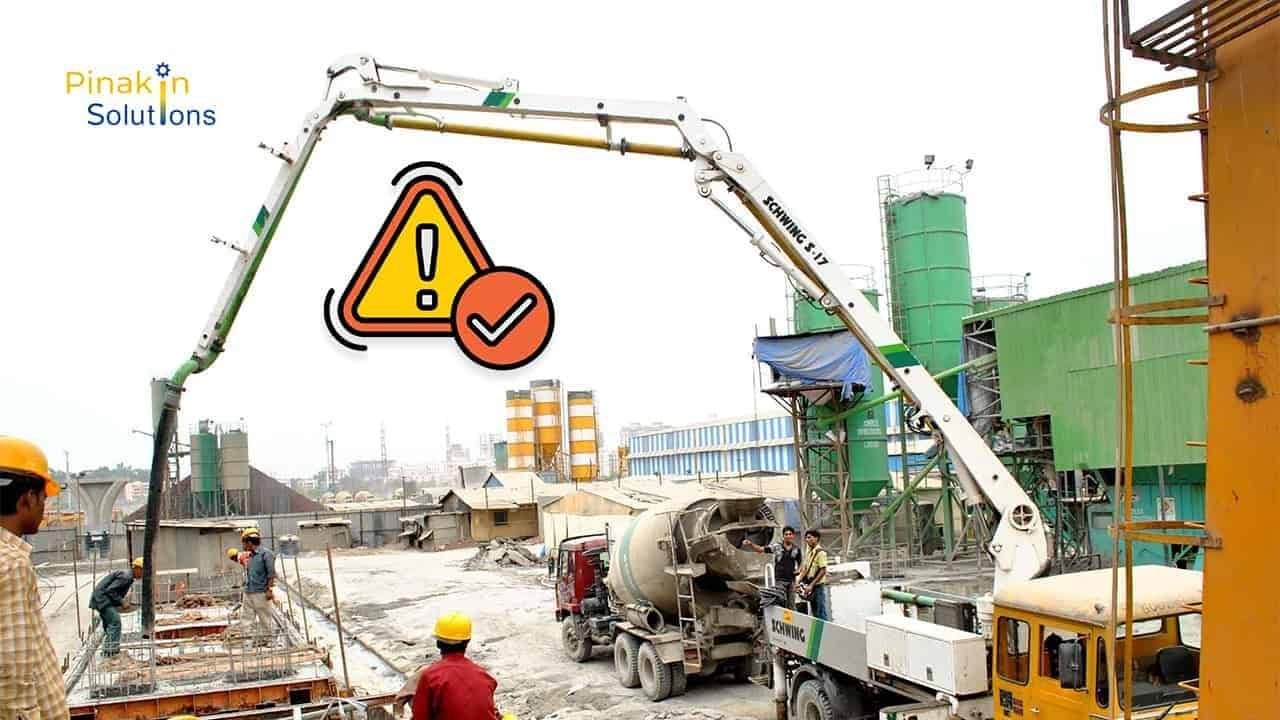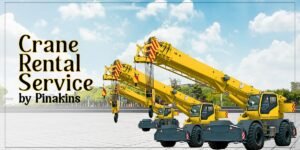Operating a boom placer requires expertise and adherence to strict safety guidelines to ensure efficient and secure concrete placement. In this comprehensive guide, we will explore the operation and safety guidelines for boom placers. From pre-operation checks to best practices during operation, let’s dive into the essential steps to ensure smooth and safe concrete pouring.
Table of Contents
ToggleBoom Placer Operation Guidelines:
Operating a boom placer requires following specific guidelines to ensure smooth and precise concrete placement. This section will cover essential operation guidelines, including setting up the boom placer, establishing communication channels, and controlling the boom movement. Let’s explore each aspect in detail:
Setting up the Boom Placer
Proper setup of the boom placer is crucial for safe and efficient operation. Follow these guidelines during the setup process:
- Positioning: Place the boom placer on stable ground, ensuring that it is level and securely supported. Activate the outriggers or stabilizers to provide additional stability and prevent tipping.
- Boom Placement: Extend and position the boom arm according to the specific requirements of the project. Take into account factors such as reach, angle, and clearance to ensure optimal concrete placement.
- Hose Connection: Connect the concrete delivery hose securely to the boom arm and the concrete pump outlet. Ensure that all connections are properly tightened to prevent leakage during operation.
- Power Supply: Connect the boom placer to a reliable power source, following the manufacturer’s instructions. Ensure that the electrical connections are safe, protected, and in compliance with local regulations.
Establishing Communication Channels:
Clear and effective communication is essential to maintain coordination and safety during boom placer operations. Consider the following guidelines for establishing communication channels:
- Signal Person: Designate a signal person who is trained and familiar with standard hand signals used in construction. This person should have a clear line of sight to the operator and communicate instructions accurately.
- Two-Way Radios: Equip the operator, signal person, and other key personnel with two-way radios or communication devices to maintain constant contact during the operation. Ensure that the communication devices are in good working condition and have a sufficient range.
- Communication Protocols: Establish clear communication protocols and signals for different actions, such as starting and stopping concrete flow, boom movement, and emergency situations. Ensure that everyone involved understands and follows these protocols.
Controlling the Boom Movement:
Proper control of the boom movement is crucial for precise concrete placement and operator safety. Follow these guidelines to effectively control the boom:
- Operator Training: Ensure that the operator is well-trained and experienced in operating the boom placer. They should have a thorough understanding of the controls, functions, and limitations of the equipment.
- Smooth Movements: Execute smooth and gradual boom movements to avoid sudden jerks or swings that could lead to concrete spillage or accidents. Maintain control over the boom arm at all times.
- Clear Obstructions: Regularly assess the working area to identify potential obstacles that may interfere with the boom’s movement. Keep the area clear of personnel, equipment, and other hazards during operation.
- Avoid Excessive Reach: Avoid extending the boom arm beyond its safe working limits, as specified by the manufacturer. Exceeding the rated capacity or reach of the boom placer can lead to stability issues or structural damage.
Following these operation guidelines for setting up the boom placer, establishing communication channels, and controlling the boom movement ensures safe and efficient concrete placement. It minimizes the risk of accidents, enhances productivity, and promotes a well-coordinated construction process.
Safety Measures and Best Practices:
Ensuring the safety of personnel and maintaining a secure work environment is paramount when operating a boom placer. This section will focus on important safety measures and best practices, including the use of personal protective equipment (PPE), securing the work area, avoiding electrical hazards, and preventing overload and tip-over situations. Let’s explore each aspect in detail:
1. Personal Protective Equipment (PPE):
Wearing the appropriate PPE is crucial to protect individuals involved in boom placer operations. Here are some essential safety measures related to PPE:
Hard Hat: Wear a hard hat to protect the head from falling objects or potential impacts.
- Safety Glasses or Goggles: Use safety glasses or goggles to safeguard the eyes from flying debris or concrete particles.
- High-Visibility Vest: Wear a high-visibility vest to enhance visibility on the construction site and ensure that personnel can be easily identified.
- Protective Gloves: Use heavy-duty gloves to protect your hands from potential hazards such as sharp edges or rough surfaces.
- Safety Boots: Wear safety boots with slip-resistant soles and toe protection to prevent foot injuries.
2. Securing the Work Area:
Maintaining a secure work area is crucial to prevent accidents and ensure the safety of personnel and equipment.
Consider the following measures:
- Barricades and Signage: Set up barricades and clear signage to restrict access to the work area and notify others of ongoing operations.
- Warning Signs: Display warning signs indicating the presence of a boom placer and its potential hazards, such as swinging booms or moving parts.
- Traffic Control: Implement traffic control measures, if necessary, to ensure the safe flow of vehicles and pedestrians around the work area.
- Fall Protection: Use appropriate fall protection systems, such as guardrails or safety harnesses, when working at heights or near edges.
3. Avoiding Electrical Hazards:
Electrical hazards pose a significant risk during boom placer operations. To avoid accidents and ensure electrical safety, follow these guidelines:
- Overhead Power Lines: Identify the location of overhead power lines and maintain a safe distance to prevent accidental contact. Adhere to the required clearance distances specified by local regulations.
- Ground Fault Circuit Interrupters (GFCIs): Use GFCIs on all electrical equipment and outlets to protect against electrical shocks and potential ground faults.
- Inspections and Maintenance: Regularly inspect electrical cords, connections, and equipment for signs of wear or damage. Replace any faulty or frayed components promptly.
4. Preventing Overload and Tip-over Situations:
Overload and tip-over situations can result in severe accidents and damage. To prevent such incidents, follow these preventive measures:
- Load Capacity: Adhere to the load capacity limits specified by the manufacturer. Do not exceed the maximum load capacity of the boom placer.
- Proper Counterweighting: Ensure that the boom placer is properly counterweighted to maintain stability during operation. Follow the manufacturer’s recommendations for counterweight placement and adjustments.
- Slope Stability: Assess the ground slope and stability when setting up the boom placer. Avoid working on steep or unstable terrain that may increase the risk of tip-over situations.
- Boom Movement: Exercise caution when extending or retracting the boom arm. Maintain a balanced load distribution and avoid sudden or jerky movements that could destabilize the boom placer.
By following these safety measures and best practices related to PPE, securing the work area, avoiding electrical hazards, and preventing overload and tip-over situations, construction professionals can promote a safe working environment during boom placer operations. These precautions reduce the risk of accidents, protect personnel, and ensure the efficient completion of construction projects.
Must Read These Also.
- Vibratory Hammer: Unveiling the Power Behind Precise Foundation Construction
- Vibratory Hammer on Rent: Enhancing Construction Efficiency and Flexibility
Frequently Asked Questions (FAQs):
Q1: What are the critical components of a boom placer?
A boom placer consists of several key components that work together to perform concrete placement. These components include the boom arm, hydraulic system, concrete pump, outriggers or stabilizers, control panel, and delivery hose.
Q2: How do I ensure stability while operating a boom placer?
Ensuring stability is crucial to safe boom placer operation. Follow these guidelines to maintain stability:
- Proper setup on stable ground.
- Extend outriggers or stabilizers fully and securely.
- Counterbalance the boom placer according to the load and manufacturer’s recommendations.
- Avoid sudden or jerky movements that may compromise stability.
Q3: What should I do in case of a boom malfunction?
In the event of a boom malfunction, take the following steps:=
- Immediately stop operations to prevent further damage or accidents.
- Notify the supervisor or equipment provider about the issue.
- Do not attempt to repair the boom yourself unless you are a qualified professional.
- Follow the manufacturer’s instructions for troubleshooting or seeking technical assistance.
Q4: How can I mitigate risks associated with power lines during operation?
Working near power lines requires caution to prevent electrical hazards. Here’s what you can do:
- Identify the location of overhead power lines and maintain a safe distance as specified by local regulations.
- Use caution tape, barriers, or signage to indicate restricted areas near power lines.
- Communicate with the signal person to ensure the boom placer remains a safe distance away from power lines.
- Follow electrical safety protocols and consider using non-conductive boom placer components if working in proximity to power lines.
Q5: What are the common maintenance tasks for a boom placer?
Regular maintenance is essential to keep the boom placer in optimal working condition. Common maintenance tasks include:
- Lubricating moving parts as per the manufacturer’s recommendations.
- Inspecting and replacing worn or damaged components.
- Checking and tightening electrical connections.
- Performing hydraulic system checks and addressing any leaks promptly.
- Conducting periodic inspections and servicing according to the maintenance schedule.
Q6: What are the safety considerations when working with a boom placer?
Safety should be a top priority when operating a boom placer. Some safety considerations include:
- Properly training all personnel involved in the operation of the boom placer.
- Conducting pre-operation checks to ensure the equipment is in good working condition.
- Following safety protocols for personal protective equipment (PPE), such as wearing hard hats, safety glasses, and safety boots.
- Establishing effective communication channels and using standardized hand signals.
- Regularly assessing the work area for potential hazards and maintaining clear access routes.
By addressing these frequently asked questions, individuals operating a boom placer can gain a better understanding of the key components, stability measures, troubleshooting steps, and safety considerations associated with this equipment.
Must Read These Also.
- How Vibro Hammer is Game Changer for Indian Government Development Projects?
- Vibro Hammer Machine: Revolutionizing Foundation Construction
Conclusion:
By following proper operation and safety guidelines, you can maximize the efficiency and security of boom placer operations. Remember to conduct pre-operation checks, prioritize safety measures, and stay up-to-date with industry best practices. Your commitment to safe and responsible operation will contribute to successful concrete placement and project success.
Incorporate these guidelines into your construction practices, and ensure that your boom placer operations adhere to the highest standards of efficiency, precision, and safety.
By following these operation and safety guidelines, you can confidently operate boom placers, enhance productivity, and ensure the safety of your construction crew and surrounding environment.





